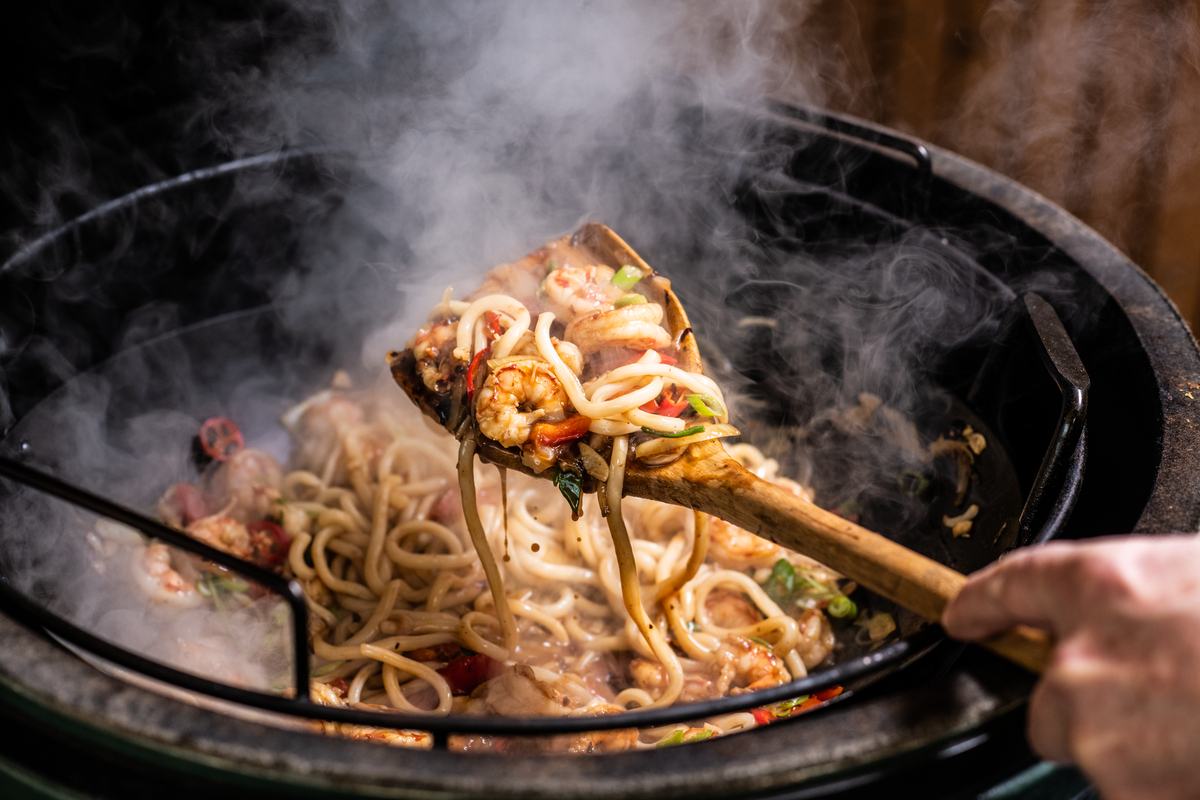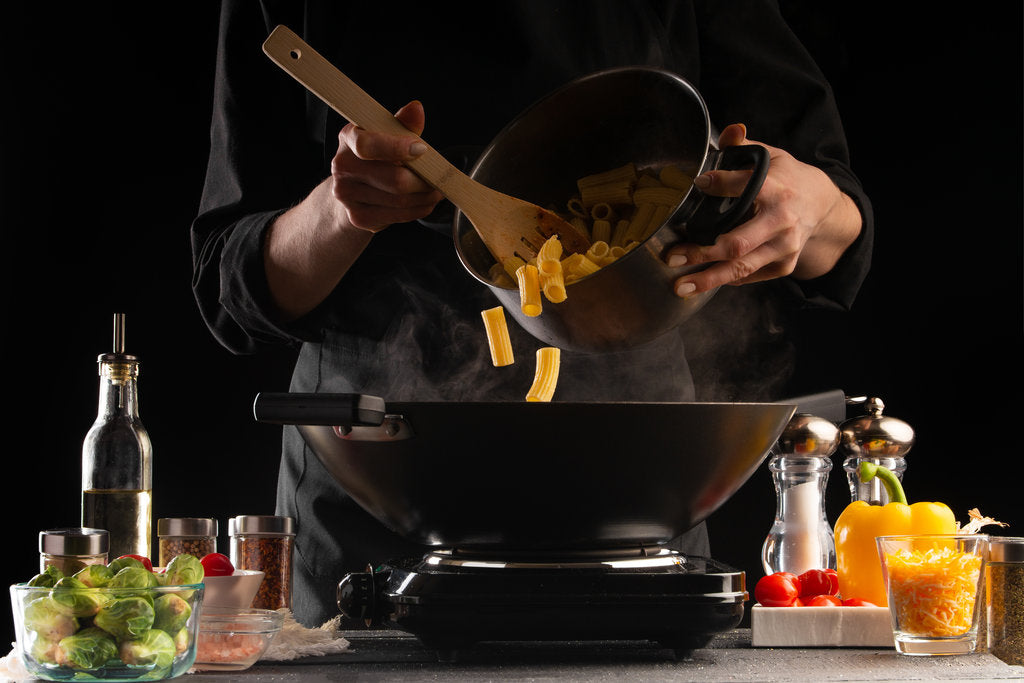What is Special About a Wok: Discover the Extraordinary Features of This Versatile Cooking Tool
Written By James Morgan
What is special about a wok? This seemingly simple cookware has long held a place of honor in both traditional Asian kitchens and modern Western homes. But what makes it so unique, especially for barbecue enthusiasts? In this comprehensive guide, we will delve into the fascinating world of woks and explore their multifaceted appeal.

Introduction to the Wok
A wok is a versatile piece of cookware widely used in East and Southeast Asian cuisine. It is characterized by a round bottom and high sides, which facilitate easy stirring and tossing of food. The term 'wok' itself means 'cooking pot' in Chinese, and it is no exaggeration to say that woks are truly multi-functional culinary tools.
The History of the Wok
The history of the wok dates back over 2,000 years, with its origins rooted in China. Initially used over an open flame, the wok was perfect for a variety of cooking methods, including stir-frying, steaming, and boiling. Its design has remained largely unchanged for centuries, attesting to its efficiency and adaptability.

Exceptional Heat Distribution
One of the primary benefits of a wok is its exceptional heat distribution. The unique shape of the wok ensures that heat is concentrated at the bottom while the high sides remain slightly cooler. This heat gradient allows for precise cooking control, making it easier to achieve the perfect sear on meats and vegetables. For barbecue enthusiasts, this means that a wok can be an invaluable tool for achieving delicious, smoky flavors.
High Heat Capacity
Woks are designed to withstand incredibly high temperatures, making them ideal for cooking over open flames or on the grill. This high heat capacity allows for rapid cooking, which locks in the flavors and juices of your ingredients. Whether you're searing a steak or stir-frying vegetables, the wok's ability to handle intense heat will enhance your barbecue experience.

Versatility in Cooking Techniques
Another aspect that makes woks special is their versatility in accommodating various cooking techniques. Here are some ways you can use a wok:
- Stir-Frying: The most common method, perfect for quick and healthy meals.
- Steaming: Insert a steaming rack to cook vegetables, fish, or dumplings.
- Deep-Frying: The high sides make it easier to control oil splatter.
- Smoking: Add some wood chips for a unique smoky flavor.
With a wok, you can master a multitude of cooking methods, making it an indispensable tool in your barbecue arsenal.
Stir-Frying for a Quick Meal
Stir-frying is perhaps the most popular use of a wok. The process involves cooking small pieces of food quickly over high heat while constantly stirring. This method retains the nutrients and vibrant colors of the ingredients. For barbecue enthusiasts, stir-frying is a great way to incorporate fresh veggies and proteins into your grilling repertoire.

Durability and Longevity
A well-made wok is incredibly durable and can last for decades with proper care. Most woks are constructed from carbon steel, which is known for its strength and even heating properties. Over time, a carbon steel wok will develop a natural non-stick patina, reducing the need for excessive oil and making it easier to clean.
Choosing the Right Wok
When selecting a wok, consider the material and construction. Carbon steel woks are the most popular due to their durability and heat distribution. Cast iron woks also offer excellent heat retention but are heavier and require more maintenance. If you prefer a lighter option, stainless steel woks are a good choice, though they may not provide the same level of heat control as carbon steel or cast iron.
Seasoning and Maintenance
Proper seasoning and maintenance are crucial for keeping your wok in top condition. Seasoning involves coating the wok with oil and heating it to create a protective layer that prevents rust and enhances non-stick properties. Regular maintenance includes cleaning your wok without harsh detergents and reapplying oil as needed.
How to Season Your Wok
Seasoning a wok is a straightforward process. Start by washing the wok with warm soapy water to remove any factory residue. Dry it thoroughly and place it on the stove over medium heat. Once the wok is hot, add a thin layer of vegetable oil and use a paper towel to spread it evenly. Continue heating the wok until the oil begins to smoke, then remove it from the stove and let it cool. Repeat this process a few times to build up a robust, non-stick coating.
For more detailed instructions, check out our guide on How long to season a wok.
Summing Up: The Unparalleled Utility of a Wok for Barbecue Enthusiasts
So, what is special about a wok? Its unique design, exceptional heat distribution, versatility, and durability make it an indispensable tool for both traditional and modern cooking methods. For barbecue enthusiasts, a wok offers a whole new world of culinary possibilities, from quick stir-fries to smoky, charred dishes.
By incorporating a wok into your barbecue setup, you can elevate your grilling game and explore new and exciting flavors. Whether you're a seasoned grill master or a casual barbecue lover, the wok is a must-have addition to your collection of cooking tools.
Frequently Asked Questions
What is the best material for a wok?
Carbon steel is the most popular material due to its durability and even heating properties. Other options include cast iron and stainless steel, each with its own advantages.
How do I prevent my wok from rusting?
Proper seasoning and maintenance are key to preventing rust. After each use, clean your wok without harsh detergents, dry it thoroughly, and apply a thin layer of oil before storing.
Can I use a wok on a barbecue grill?
Absolutely! Woks are designed to handle high temperatures, making them perfect for use on a barbecue grill. They can add a unique smoky flavor to your dishes.
For more tips and guides on using a wok, visit our blog.
For additional resources on cooking with a wok, check out this comprehensive guide on Serious Eats.
As an Amazon Associate, I earn from qualifying purchases.



